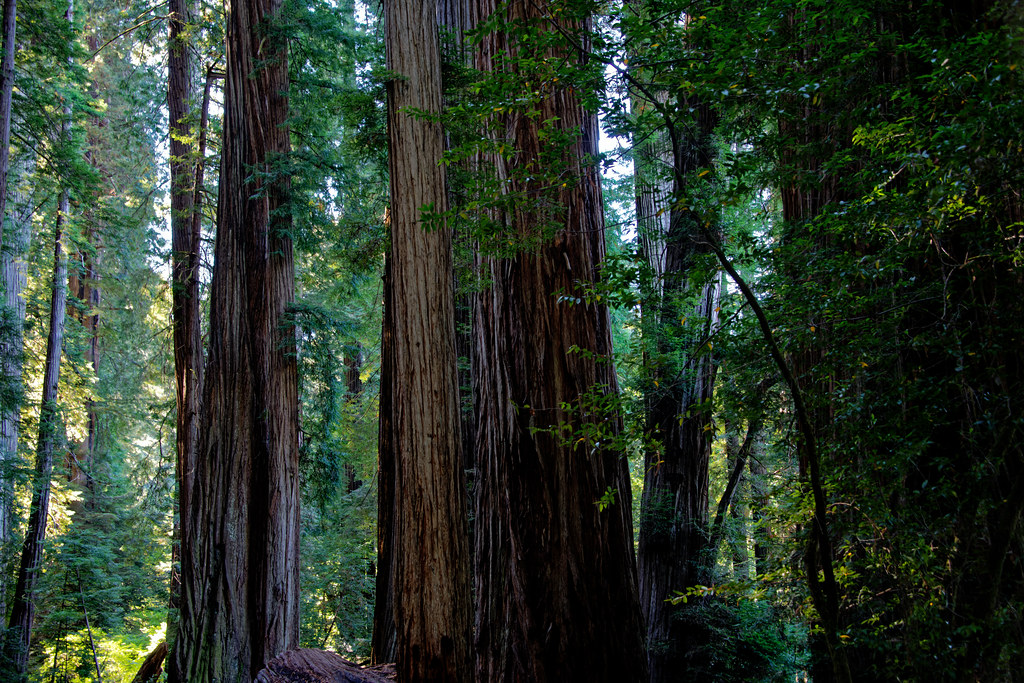#klamath mountains
Text


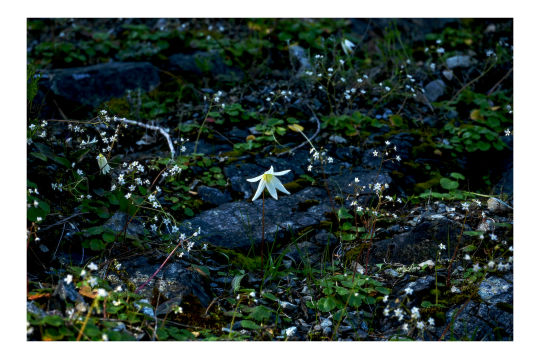
Erythronium californicum, champion of spring in the klamath serpentines.
Six Rivers National Forest, California
#erythronium#erythronium californicum#fawn lily#trout lily#lily#spring#klamath mountains#serpentine#forest floor#flower photography#nature photography#macrophotography#original photographers#photography#nikon photography#nikon#24mm-120mm#photographers on tumblr
45 notes
·
View notes
Link
“Out in the Klamath Mountains of northern California, fires are rushing through the underbrush, lighting everything they touch between the trees ablaze.
However these aren’t a danger to the rich hardwood forests, they are deliberately set by the Yurok and Karuk tribal nations—as a wildfire prevention strategy of all things.
As strange as it might sound to literally fight fire with fire, it’s something the tribes of these mountains have done for at least 1,000 years according to oral tradition.
Low-level and controlled burnings are in fact an ancient and successful forest-management practice. A cleared forest floor and less fine fuels such as leaves and ferns, makes it more difficult for wildfires to ignite and spread.
Wildfires have raged across California over the last half-decade, and out of these ashes sprouted a partnership between the U.S. Forest Service and the tribal nations of the Klamath Mountains.
In 2018 they began collaborating on the Somes Bar Restoration Project to use traditional fire techniques to safeguard 5,570 acres (2,254 hectares) of land covered in white, black, and tan oaks, Douglas fir, red fir, and madrones on steep slopes...
Mongabay reports that some forest managers have seen wildfires reach the edges of the forests managed by the Karuk and Yurok and simply go out on their own due to a combination of fuel-shortage and bigger, healthier trees.” -via Good News Network, 11/23/22
#california#yurok#karuk#indigenous#native american#tribal sovereignty#wildfire#controlled burn#ecology#fire management#forest service#klamath mountains#trees#forest fires#good news#hope
672 notes
·
View notes
Video
The Trees Have Given to the Wind Their Melodies (Jedediah Smith Redwoods State Park) by Mark Stevens
Via Flickr:
While walking along the Stout Memorial Grove with a view looking up and to the west at nearby coast redwoods in Jedediah Smith Redwoods State Park. My thinking in composing this image was to have more of a leveled-on view, looking straight ahead at the forest around me. With some sunlight coming through the trees, it also helped to create some contrast with those portions caught in sunlight and the others still in the forest shadow.
#Azimuth 264.40#Blue Skies#California and Oregon Road Trip#Coast Redwood#Day 8#DxO PhotoLab 5 Edited#Evergreen Trees#Evergreens#Forest#Forest Landscape#Jedediah Smith Redwoods State Park#Klamath Mountains#Landscape#Landscape - Scenery#Looking Up#Looking West#Looking up at Sky#Looking up at Sky through Trees#Looking up at Sky thru Trees#Looking up to Sky#Nature#Nikon D850#No People#Northwest U.S. Coast Ranges#Outside#Pacific Ranges#Portfolio#Project365#Redwood National and State Parks#Scenics - Nature
2 notes
·
View notes
Text

I have a few favorite species of trees. The quirky ginkgo, the massive coast redwood, the lacy Port Orford cedar, and the tenacious foxtail pine. Kim Vawter took this photo (above) of foxtail pines near the Bighorn Plateau west of Mt. Whitney.
Most of the trees in this area are stunted by the proximity to the treeline except for the ruddy-barked foxtail pine, with its broad trunk and windswept foliage standing stalwart against the harshest of elements. It seemed even more amazing that foxtails could seemingly thrive when even modest ground cover had retreated to more salubrious habitats. The forest floor is virtually barren in this area.
There is also a population of foxtail pines some 500 miles north from the Bighorn Plateau in the Klamath Mountains in Northern California, where I live. Even though these populations have been separated since the mid-Pleistocene (some million years), both retain the bottlebrush needle arrangement that gives foxtail pines their distinctive appearance and name. But there are differences. Over the millennia, these subspecies have diverged in foliage, crown form, and bark color. The southern subspecies can live more than twice as long as its northern relatives (1,000 years), although neither contest the longevity of the foxtail’s cousin, the bristlecone pine (which touch 5,000 years).
RH
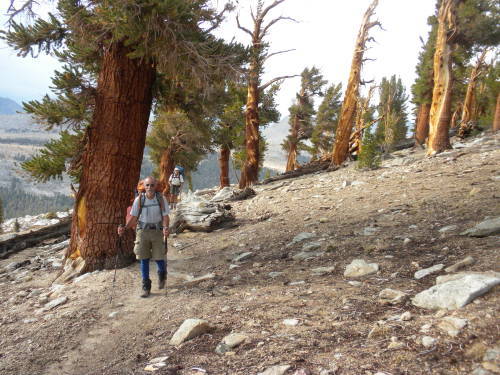
(Photo credit: Rees Hughes)
3 notes
·
View notes
Text
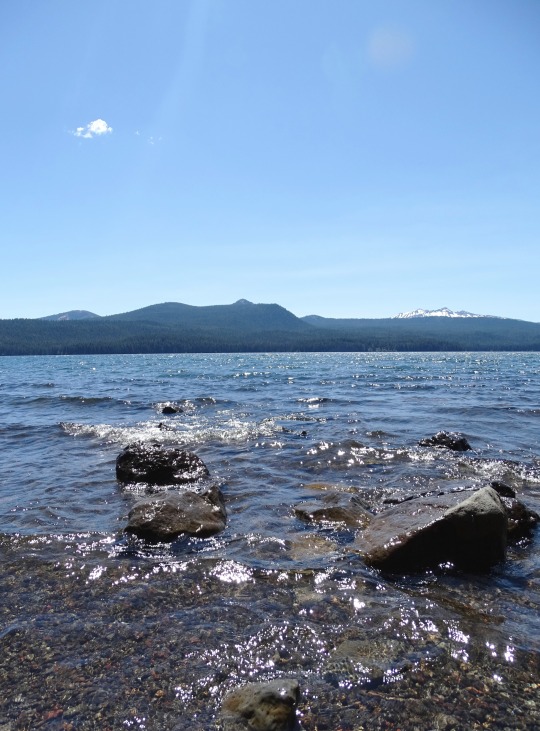
Cool Water
What do you think about my pic?
#Diamond Peak#Odell Lake#Klamath County#Cascade Range#Oregon#travel#original photography#vacation#tourist attraction#landmark#landscape#countryside#lake shore#mountain#stone#water#USA#summer 2023#forest#woods#photo of the day#What do you think about my pic?#Deschutes National Forest#Pacific Northwest
27 notes
·
View notes
Text
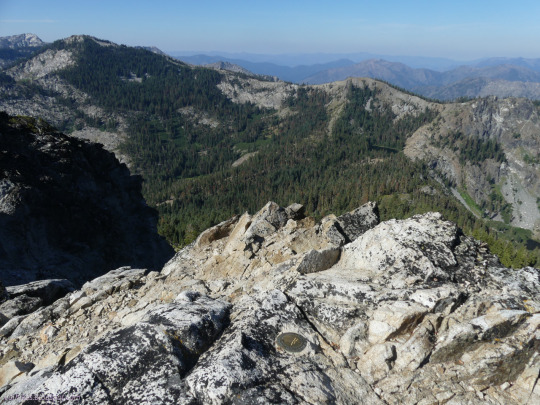


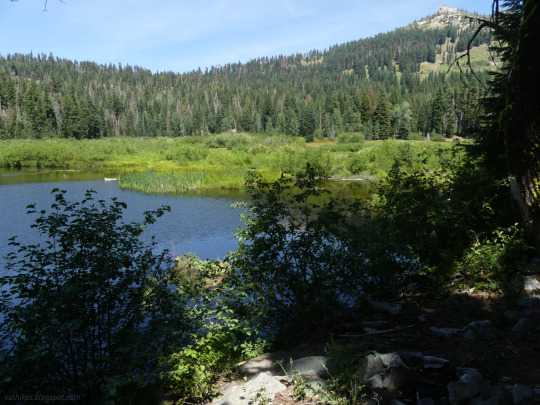

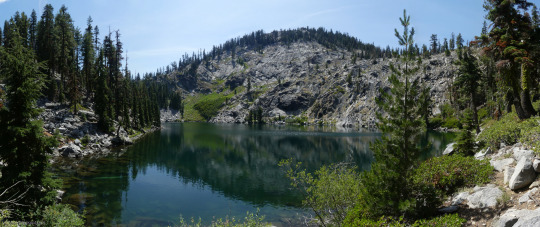





Russian Wilderness, Klamath National Forest, California
Day 2: Tagging the top of Etna Mountain and then stopping by Meeks Meadow Lake and Smith Lake (by trail that isn't) and finally Paynes Lake.
#hiking#nature#landscape#travel#hike#outside#California#peak bagging#mountains#Siskiyou County#Russian Wilderness#Klamath National Forest#KlamathNF#newt#wildlife#lakes#Paynes Lake#Ruffey Lakes#Meeks Meadow Lake#Smith Lake#PNW#PCT
4 notes
·
View notes
Photo

5 Gallon Trail
5 Gallon is one of the longer trails in Moore and built by the builders that laid trail from one rock garden to the next. It is the easiest climb up to the shelf at Linda's and a nice decent as well. While the trail was being built a large bum camp...
view more trail info & map

3 notes
·
View notes
Text

Headline by: Ryan Burns. “Ground Has Been Broken on Klamath River Restoration, the World’s Largest-Ever Dam-Removal Project.” Lost Coast Outpost. 23 March 2023.
---

The world’s largest dam removal in history is slated for 2023. Led by Indigenous tribes in partnership with organizations, lawyers, scientists and activists, the project will remove four dams, clearing the way for the lower Klamath River to flow freely for the first time in more than a century.
Headline and italicized text excerpt by: Malia Russ. “The Science of Saving Salmon as Klamath Dams Come Down.” UC Davis - Blogs - Climate. 24 February 2023.
---

Headline by: Jackson Guilfoil. “Klamath dam removals, habitat restoration, begins.” The Mercury News. 25 March 2023.
---
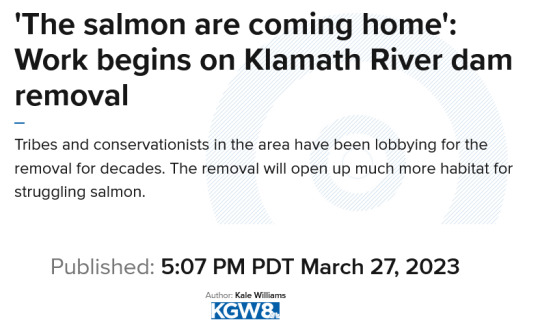
Headline by: Kale Williams. “‘The salmon are coming home’: Work begins on Klamath River dam removal.” KGW8. 27 March 2023.
---

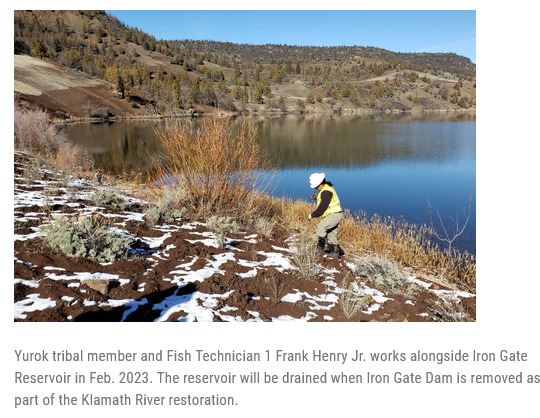
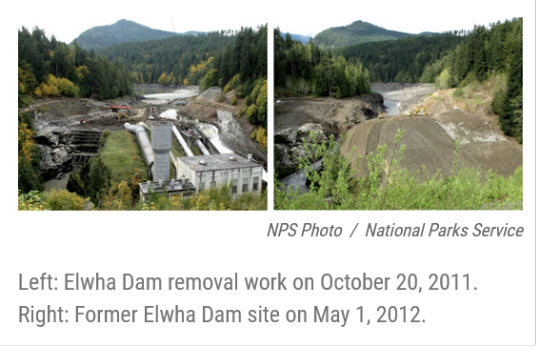
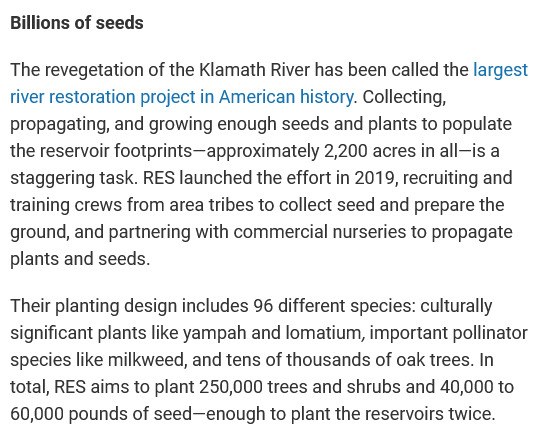
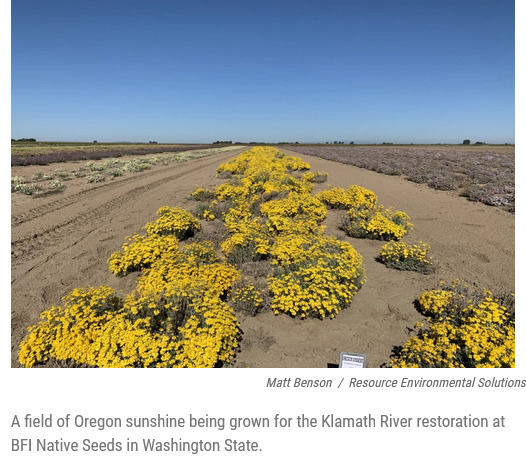
Iron Gate is a sinuous, skinny reservoir tucked into the folds of the Siskiyou Mountains. Draining it will expose about 900 acres of wet mud. “It’s our job to make sure it’s revegetated. We want that to be revegetated with a healthy native plant ecosystem,” says Joshua Chenoweth, Senior Riparian Ecologist for the Yurok Tribe who is leading the replanting effort. [...] Last fall, they seeded the strip with a mix of native grasses and flowering plants; now, they’re installing young shrubs and trees: buckbrush, serviceberry, and Oregon ash, along with the Klamath plum. Collectively, these plants will create a “wall of green,” taking up space that would have otherwise been overrun by non-native plants [...]. The revegetation of the Klamath River has been called the largest river restoration project in American history. Collecting, propagating, and growing enough seeds and plants to populate the reservoir footprints -- approximately 2,200 acres in all -- is a staggering task. [...] Their planting design includes 96 different species: culturally significant plants like yampah and lomatium, important pollinator species like milkweed, and tens of thousands of oak trees. [...] What will a restored, wild Klamath River look like? Imagine it. Stand at the Wanaka Springs boat launch and picture Iron Gate reservoir drained. The river has found its channel at the base of its original canyon. Willows flank the banks. Much of the reservoir footprint is flush with upland vegetation -- oak copses; thickets of buckbrush and Klamath plum; blooming rose and lupine.
---
Headline, images, captions, screenshot, and italicized text excerpt from: Juliet Grable. “After the dams: Restoring the Klamath River will take billions of native seeds.” Jefferson Public Radio. 13 March 2023.
2K notes
·
View notes
Text
Gather is an intimate portrait of the growing movement amongst Native Americans to reclaim their spiritual, political and cultural identities through food sovereignty, while battling the trauma of centuries of genocide.
Gather follows Nephi Craig, a chef from the White Mountain Apache Nation (Arizona), opening an indigenous café as a nutritional recovery clinic; Elsie Dubray, a young scientist from the Cheyenne River Sioux Nation (South Dakota), conducting landmark studies on bison; and the Ancestral Guard, a group of environmental activists from the Yurok Nation (Northern California), trying to save the Klamath river.
Please share!!

#please share#indigenous lives matter#indigenous#food sovereignty#activism#food#environmental justice#share share share#share#indigenous activism#nativeamericans#native plants#native women#repost this#film#documentary#films to watch#netflix#streaming now#thank you to the Allied Media Group in Detroit for hosting a screening#blaze it
208 notes
·
View notes
Note
I have been wondering, since I plan to one day grow a sustainable food forest with lots of native plants, the thought of soil came up. Is there an important role to nutritionally poor soil? I ask because to my knowledge, some plants prefer certain soils and nutritionally light soils can be found in nature. I know this won't apply everywhere, but I do know there are plants adapted to at least tolerate deficient soil. When I tried looking this up I mostly got resources about crops in relation to nutritionally deficient soil.
@localcustard - Good question! So it's not so much that the poor soil plays a particular role, as the other way around--certain plants have adapted to growing in poor soil or other harsh conditions.
One example would be pioneer species, like certain mosses, ferns, grasses, various annuals, etc. that are able to colonize recently disturbed areas that may not have very good soil. Even later arrivals like early succession shrubs and trees may be able to handle poor soil. Generally these plants are able to subsist with fewer nutrients than other species. Many of them are nitrogen fixers, meaning they cooperate with soil bacteria that draw nitrogen from the air and turn it into a form that is more accessible to plants. Often the plants will have nodules in their roots or other tissues where these bacteria live; the bacteria get a safe place to live and access to sugars the plant makes through photosynthesis, and the plants get crucial access to nitrogen.
As these plants die, the nitrogen still stored in their tissues disseminates into the soil, making it accessible to later-succession plants that cannot fix nitrogen themselves. A good example is the red alder tree (Alnus rubra), a common first-succession tree here in the Pacific Northwest. It is a nitrogen fixer, and paves the way for later-succession conifers in many forests here. Historically timber companies have sprayed alders with herbicides when they pop up a few years after a clearcut because they didn't want the alders competing with the young Douglas fir (Pseudotsuga menziesii) (or whatever trees the timber people replanted with) for resources. However, more recent research shows that the conifers grow better when the alders are allowed to grow, in part due to the nitrogen, as well as connections through the soil microbiome (more about that in a minute.)
Another example of plants living in poor soil is plant communities that are adapted to harsh environmental conditions. One of my favorite examples is the plant community that lives on serpentine soil in the Klamath Mountains in southwest Oregon and northern California. Soil is made partly of organic material from various decaying life forms, but it is also composed of minerals from eroded rock. This means that the qualities of the bedrock below the soil has a big influence on soil composition.
Serpentine soils (which may also include other ultramafic rocks) generally are low in nitrogen, calcium, phosphorus, and other essential nutrients plants need. On the other hand, they frequently have high levels of iron, and often have a lot of magnesium, and heavy metals like nickel and chromium. Plants adapted to serpentine soils have had to evolve ways to deal with these additional toxins as well as a deficit of nutrients. Add in that serpentine soils are commonly found in places with harsh weather conditions and erosion, such as the Klamaths, and there's not much opportunity for the organic portion of the soils to build up. All of which means the plants native to the Klamath region are able to handle those poor soil conditions that would kill other plants.
So what does this mean for habitat restoration? Native plants are already adapted to the soils they evolved on for thousands or even millions of years. Some restorers actually discourage amending the soil where you're planting because aggressive invasive and other non-native plants will take advantage of the additional nutrients and out-compete the native species. Many native plants will grow just fine in amended soil; you just need to make sure to prepare to do some weeding as well. But it does mean that if your natural soil type has low in certain nutrients, you don't need to necessarily amend with those nutrients in order to make your native plants happy.
For myself, if I am starting native plants in pots I will give them a good 50-50 soil-aged manure mix to give them a good head start, and add a little into whatever hole I plant them in in the ground later on to give them a chance to adapt to the new soil. I still have to do a lot of weeding, but that's because I've chosen not to just totally annihilate all the non-natives with herbicides before planting. I also live in a fairly rural area with young, sand-based soil that is pretty close to its original form, so planting native species found in my area already goes pretty well as long as I'm also respecting each plant's need for sun, water, wind exposure, etc.
What you might consider is getting your soil tested to see what's in there. Often in places that have been changed over to agriculture, housing, and other development for many years, the soil has been significantly changed from its original form. It doesn't mean that you can't plant in soil that is heavily altered, but it's at least good to know, if you're going to amend the soil at all, what's already abundant and what's scarce.
Finally, I want to add in a quick note about the soil microbiome. Well-established soil has multiple layers of microorganisms, fungi, and other living beings in it, with different communities at different depths. Many of these will be species that native plants have interrelationships with (for example, mycorrhizal fungi that share nutrients with plants through the mycelium-root matrix.) When I am planting I try to disturb the soil as little as possible; rather than turning over an entire area of soil, I only dig where I'm going to be planting starts and other established plants so that the soil microbiome surrounding that hole can recolonize where I've disturbed it through planting. That soil microbiome is crucial to a plant's ability to handle poor soil, because it helps the plant to access what nutrients are available.
If you want to dive in deeper, a couple books relevant to the topic at Geology and Plant Life: The Effects of Landforms and Rock Types on Plants by Arthur R. Kruckeberg, and Savannas, Barrens, and Rock Outcrop Plant Communities of North America by Anderson, Fralish, and Baskin. Both are academic-level texts so they aren't casual reading, but they have a lot of good information relevant to how geology affects soil, to include nutrient-poor soils.
#localcustard#plants#botany#soil#ecology#gardening#habitat restoration#geology#permaculture#nature#naturecore#rocks#stones#serpentine#minerals#PNW#pacific Northwest
142 notes
·
View notes
Text
Sometimes rules aren't meant to be broken...
...as Elsa and Jack learn in chapter two of "Ties That Bind."
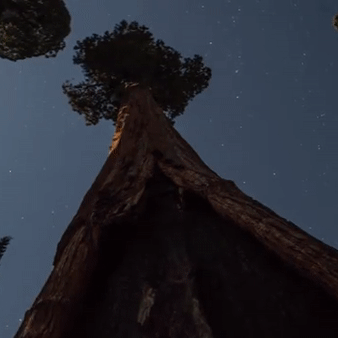
Here's a taste of it.
-------------
“Amor,” Elsa murmured from where she crouched beside Jack, “we don’t have to do this.”
It took a second for his mate’s words to register. Between the nearly full moon’s light filtering through the redwood’s canopy and Elsa’s scent filling his half-wolf nose, Jack felt inebriated. They’d spent a leisurely, relaxing day in the virgin redwood forest, alternating between hiking, rutting, and napping on steep hills east of the Klamath Tour Thru Tree. He and Snow hadn’t wanted to leave the forest even for this brief excursion, but their mate wanted this. She’d said so two months ago, and they’d move heaven and earth to give her what she wanted.
“But we’re right here,” Jack rumbled with the wolf’s bass. He’d shifted forms a few minutes earlier deeper in the woods around the giant redwood humans had carved a tunnel through decades ago. Night had quietly kept watch while his body morphed and grew, his clothes already stashed in one of their bike’s saddlebags. From the side of the narrow road leading to the tree Elsa, wearing her motorcycle jacket and overpants, had kept her own watch. With the 101 and two small towns nearby they were more concerned with discovery by humans than bear or mountain lions.
Now Jack, Elsa, and Night peered through a stand of manzanita at the concrete barriers ringing the redwood. A half dozen hand-painted signs forbade vehicular traffic in the tunnel. Tourists were welcome to walk through the tree for a $5 fee.
Read the rest on ao3.
#werewolf by night#fan fiction#fan fic#signs signs everywhere there's signs#for good reason occasionally#elsa bloodstone#jack russell
7 notes
·
View notes
Text

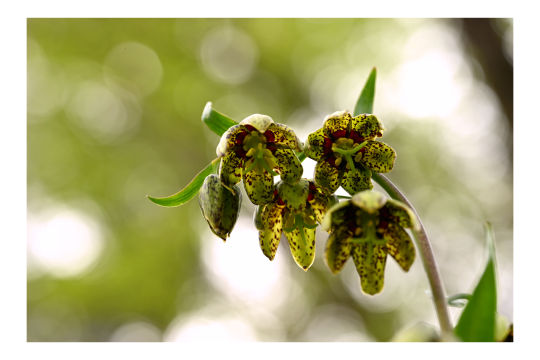
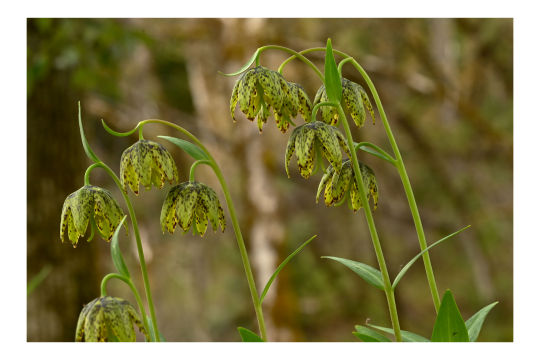

A beautiful patch of Checker Lilies, Fritillaria affinis, in Oregon White Oak (Quercus garryana) / Black Oak (Quercus kelloggi) woodland, above the Trinity River.
#Fritillaria#Checker Lily#Lillium#forest floor#Oak Woodland#Trinity River#six rivers national forest#spring#botany#public lands#Klamath Mountains#Northern California#beautiful nature#naturecore#flower photography#macrophotography#botany photography#nature photography#original photographers#nikon photography#nikon#105mm#photographers on tumblr
25 notes
·
View notes
Link
A dense forest isn’t necessarily a healthy one, says Knight. Douglas firs (Pseudotsuga menziesii), which dominate the lowland Klamath forests, are less fire resilient and more prone to calamitous wildfires. “This idea that we simply should let nature take its course is just not supported by this work,” she says. She adds that one of the study’s strengths is the multiple lines of evidence showing that past Indigenous burning helped to manage tree density.
[...]
Palaeoecology studies are increasingly incorporating Indigenous knowledge — but there’s still a long way to go, says physical geographer Michela Mariani at the University of Nottingham, UK. In Australia, Mariani has also found that tree density began to increase after British colonization hampered cultural burning. “It’s very important that we now include Indigenous people in the discussion in fire management moving on,” Mariani says. “They have a deeper knowledge of the landscape we simply don’t have.”
112 notes
·
View notes
Video
Supercharging My Life Experiences in Jedediah Smith Redwoods State Park by Mark Stevens
Via Flickr:
A setting looking to the southwest while taking in views of nearby coast redwoods along the Grove of Titans in Jedediah Smith Redwoods State Park.
#Azimuth 232#Blue Skies#California and Oregon Road Trip#Coast Redwood#Day 8#DxO PhotoLab 5 Edited#Evergreen Trees#Evergreens#Forest#Forest Landscape#Grove of Titans#Jedediah Smith Redwoods State Park#Klamath Mountains#Landscape#Landscape - Scenery#Looking SW#Looking Up#Looking up at Sky#Looking up at Sky through Trees#Looking up at Sky thru Trees#Looking up to Sky#Nature#Nikon D850#No People#Northwest U.S. Coast Ranges#Outside#Pacific Ranges#Project365#Redwood National and State Parks#Scenics - Nature
2 notes
·
View notes
Text

The Seiad Valley Pancake Challenge remains one of the PCT traditions. Five humongous pancakes eaten in two hours and they are free.
Seiad Valley is a tiny trail town in Northern California along the Klamath River wedged between the Marble Mountains and the Siskiyous. The focal point is the Seiad Valley Store and Cafe which has, for years, been home to the challenge.
I wrote my own tale of trying the Pancake Challenge in The Pacific Crest Trailside Reader: California (2011). [Here I am gearing up long ago.]

1 note
·
View note
Text


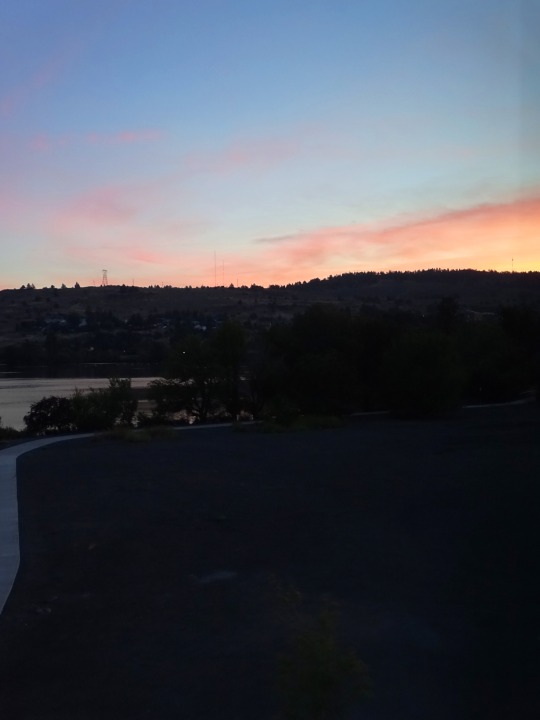
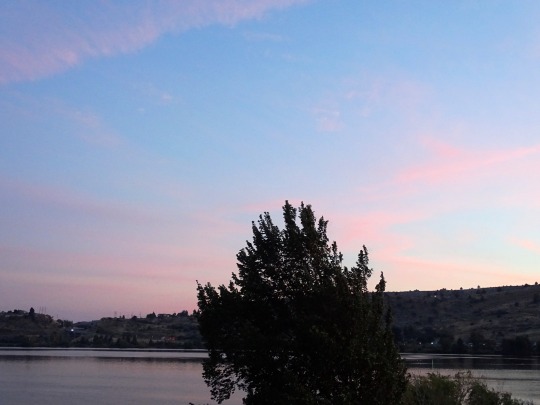
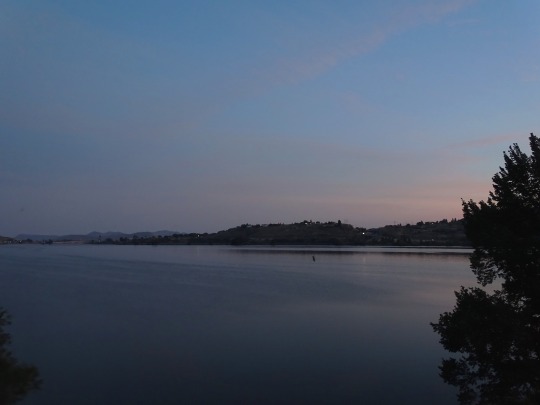





Clouds (No. 1242)
Lake Ewauna, Klamath Falls
#Lake Ewauna#reservoir#Klamath Falls#Klamath County#travel#original photography#vacation#tourist attraction#landmark#cityscape#architecture#landscape#nature#blue sky#pink clouds#flora#USA#Pacific Northwest#Oregon#summer 2023#tree#Stukel Mountain#Lake Ewauna Nature Trail#evening light#lake shore#reflection#silhouette
9 notes
·
View notes
